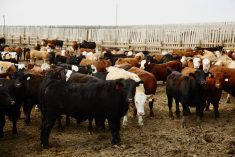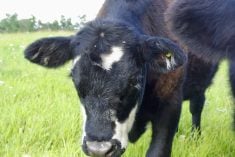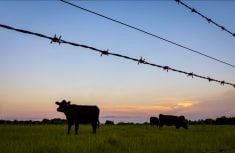From a recent article by Jocelyne Piret and Guy Boivin that appeared in Frontiers in Microbiology: The shift from hunter-gatherers to agrarian societies favoured the spread of infectious diseases in the human population. Expanded trade between communities increased interactions between humans and animals and facilitated the transmission of zoonotic pathogens.
Increased travel and a growing human population’s effect on ecosystems led to higher risks for outbreaks, epidemics and even pandemics, the authors note.
“The emergence and spread of infectious diseases with pandemic potential occurred regularly throughout history. Major pandemics and epidemics such as plague, cholera, flu, severe acute respiratory syndrome coronavirus (SARS-CoV) and Middle East respiratory syndrome coronavirus (MERS-CoV) have already afflicted humanity. The world is now facing the new coronavirus (COVID-19) pandemic,” Piret and Boivin write.
Zoonotic pathogens — transmitted to humans due to increased contact with animals through breeding, hunting and global trade — cause many infectious diseases leading to pandemics, Piret and Boivin write. We’ve established some methods to prevent and control infections by understanding the mechanisms of transmission of pathogens to humans. Public health measures such as isolation, quarantine and border control helped contain the spread of infectious diseases and maintain the structure of societies over centuries. In the absence of pharmaceutical interventions, we are still using these containment methods, note the authors.
Most pandemics have at least one thing in common: They began their deadly work in Asia or Africa. An unprecedented shift in the human population is one reason why more diseases originate in Asia and Africa. Rapid urbanization is happening throughout Asia and the Pacific regions, where 60 per cent of the world already lives. According to the World Bank, almost 200 million people moved to urban areas in East Asia during the first decade of the 21st century.
Migration on that scale means forest land is destroyed to create residential areas. Wild animals inevitably encounter domestic animals and humans. Wild animals often harbour viruses; bats, for instance, carry hundreds of them. Viruses transmitted between species can ultimately infect people.
Eventually, extreme urbanization becomes a vicious cycle: More people bring more deforestation and human expansion. The loss of habitat ultimately reduces predators, including those that kill rodents. With fewer predators, rodent populations explode. And as studies in Africa show, so does the risk of zoonotic disease.
The situation is only likely to get worse. A major proportion of East Asia’s population still lives in rural areas. Urbanization is expected to continue for decades. Tropical regions, rich in host biodiversity, already hold a large pool of pathogens, greatly increasing the chance that novel pathogens emerge. Farming systems throughout Africa and Asia add to the problem.
COVID-19 is a frightening reminder of the imminent global threat posed by emerging infectious diseases. Although epidemics have emerged throughout human history, they now seem to be on the rise. In just the past 20 years, coronaviruses alone have caused three major outbreaks worldwide. Even more troubling, the duration between these three pandemics has gotten shorter.
There is another virus of major concern for the Asian community — the Nipah virus. The death rate for the Nipah virus is up to 75 percent and it has no vaccine. Scientists are working hard to ensure it doesn’t cause the next pandemic.
Fruit bats are its natural host. It is a major concern because there is no treatment. Each year the World Health Organization reviews the list of pathogens capable of causing a public health emergency to prioritize research and development funds. They concentrate on those that pose the greatest risk to human health, those that have epidemic potential, and those for which there are no vaccines. Nipah sits among the top 10.
There are several other reasons the Nipah virus is so sinister. Its long incubation period (up to 45 days) means there is ample opportunity for an infected host to spread it. It can infect a wide range of animals, increasing the risk of spread. Nipah can be transmitted directly or through contaminated food products.
Nipah virus causes respiratory symptoms including a cough, sore throat, aches and fatigue and — ultimately — encephalitis and death.
The morning market at Battambang, Cambodia, would be an unremarkable affair — except for its fruit bats. Hanging quietly in the trees above hundreds of stalls are thousands of fruit bats, defecating and urinating on anything that passes below them. On closer inspection, the roofs of the market stalls are covered in bat feces.
Contemporary pandemics and outbreaks of disease such as H1N1 influenza, the emergence of H5N1 influenza virus and severe acute respiratory syndrome (SARS)-associated coronavirus, serve as poignant reminders of our global vulnerability to emergent threats to human health and our current inability to predict or prevent such events. However, despite the seemingly unpredictable nature of disease emergence, there are lessons to learn from the origins of recently emerged diseases, and those in the more distant past. Such lessons may offer clues as to how future infectious disease outbreaks and pandemics may be prevented. The challenge lies in using the accumulated, albeit incomplete, knowledge gained from emergent diseases of our past to identify practical solutions and strategies aimed at detecting and halting future threats.
When we review current understanding about the origins of infectious diseases and factors that contribute to their emergence, zoonotic transmission remains foremost. The spread of pathogenic agents from animals to humans characterizes many diseases afflicting humans throughout history. One key lesson from past pandemics is the pivotal importance of the human-animal interface.
— Dr. Ron Clarke prepares this column on behalf of the Western Canadian Association of Bovine Practitioners. Suggestions for future articles can be sent to Canadian Cattlemen or to the WCABP.

















